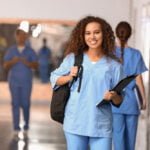 Like many, I was intrigued when LinkedIn first launched its ‘influencer’ blogging programme, back in late 2012.
Like many, I was intrigued when LinkedIn first launched its ‘influencer’ blogging programme, back in late 2012.
 Like many, I was intrigued when LinkedIn first launched its ‘influencer’ blogging programme, back in late 2012. It seemed to be a significant step for the world’s largest professional network in going from being a connector towards a conversation driver, with good content forming the basis for good discussion (and yes, I know groups have been around for longer, but there are far too few with any decent conversation on them).
Like many, I was intrigued when LinkedIn first launched its ‘influencer’ blogging programme, back in late 2012. It seemed to be a significant step for the world’s largest professional network in going from being a connector towards a conversation driver, with good content forming the basis for good discussion (and yes, I know groups have been around for longer, but there are far too few with any decent conversation on them).
It had some impressive names lined up in its portfolio right from the start, such as Richard Branson and Barack Obama, and invited others to submit their applications for a slot. I, like many others, did so and looked forward to writing alongside such influential figures.
I waited…and waited…and waited, but nothing. Eventually, after much prompting of LinkedIn I was told that the program had been closed to further applications. It was disappointing this had not been proactively communicated but I had no pretence about being that important, so moved on.
Then, as more and more people started appearing as LinkedIn Influencers, I had a feeling that they might have missed an opportunity. It started to raise fundamental questions in my mind around how we measure influence and who, therefore, are influencers. I also noticed that the world of pharma and healthcare seemed woefully under-represented.
Here, the story skips forward more than a year to early 2014, when the first ‘pharma’ influencer was proudly announced by LinkedIn, with it being none other than Pfizer CEO Ian Read, the top man at the world’s biggest pharma company (by revenue). His piece was entitled ‘You Gain Respect in Drops, But Can Lose It in Gallons’ and talked about the reputational challenges faced by the pharma industry.
It should have been a monumental moment for the industry, but it actually left me feeling a little cold. While the piece raised some very valid points on a key issue for the industry and was mostly spoken in a very human way, it did slip into some corporate spin and ultimately left me feeling not entirely convinced that it was the voice of Ian Read himself.
Note my choice of words there – I talked about ‘voice’, not who had written it, as I would fully expect a busy CEO to have someone ghost write the piece for them. But the key thing for me about influence, when it comes to blogging, is that it has to have real passion behind it – you have to really believe that the author feels really strongly about the issue, making it worth their time to shout about it. That way, whether you agree with them or not, they will have somehow influenced your views. This piece didn’t do that for me.
But this is not intended to be a critique of Ian Read’s blogging. He’s not someone in know personally, but he’s clearly an extremely able and proficient businessman to make it to the top of a company like Pfizer. The critique more comes back to LinkedIn’s choice of influencers, which seem to disproportionately be C-level execs in big global companies. Of course these people hold influence in business circles (and certainly within their own companies) but they are not always the visionaries who drive broader change and influence the everyday person.
You see, social media has democratised influence in a way that also allows people who are not in senior positions in big companies to have a real voice for driving change. In the world of healthcare, I’m talking about healthcare providers, patients, technologists, payers, scientists and, of course, pharma personnel below C-level, who have a real passion for solving problems related to disease. I did, for example, suggest to LinkedIn via Twitter that it might like to proactively reach out to some empowered patients to become part of its influencer program, and offered to help put them in touch, but they were not interested to discuss further.
My cynical side therefore feels that the LinkedIn Influencer program was too skewed by the desire to get more C-level exec profiles created and give a podium to those who, ultimately, are the decision-makers at LinkedIn’s biggest corporate clients, taking it away from some of the real, on-the-ground influencers out there.
But I’m an optimist and there is a happy(ish) ending to this story. LinkedIn recently started rolling out the ability to write influencer posts to more users, with a view towards everyone eventually having this ability. Users who are able to do this will apparently see a pencil icon near the share button, according to Mashable, which will let them publish such longer pieces to their profile. I’m not one of these blessed users so far, but if you believe the reports it should eventually reach everyone.
If this does happen, it could make LinkedIn a much more interesting place when it comes to healthcare, meaning all the groups mentioned above who currently use their own blogs, Twitter, Facebook etc. might find an interesting new home and one that is more closely followed by the corporate leaders with the power to make change happen.
So if you are in healthcare and are one of the select few who can now submit influencers posts then get in touch – I’d love to hear your views on it – and to read what you, the real influencers on the front line, have to say, alongside the business leaders.








